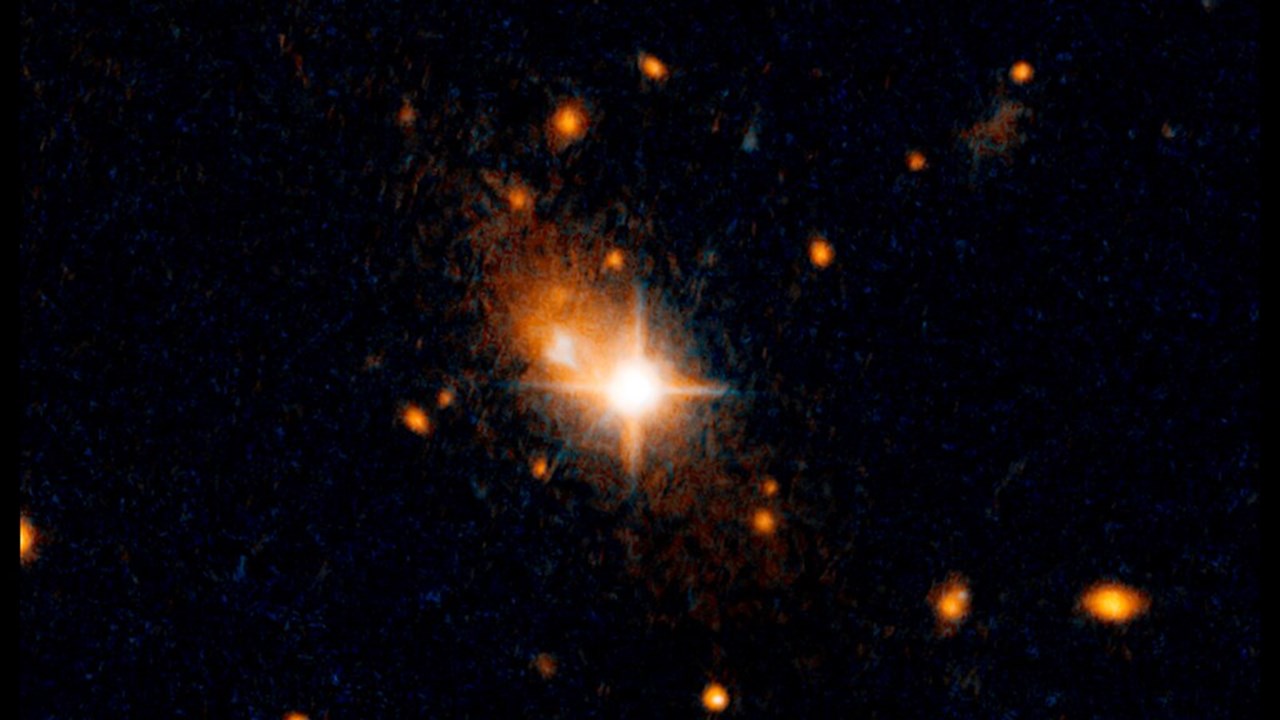In a galaxy next to our Milky Way, astronomers have discovered what they are calling a cosmic “needle in a haystack” – a dormant black hole that seems to have been formed without the explosion of a dead star.

Researchers said on Monday that this black hole differs from all others known in that it is “X-ray quiet” – not generating tremendous X-ray radiation suggestive of devouring surrounding matter with its enormous gravitational attraction – and that it was not formed in a supernova.
Black holes are extremely dense objects whose gravity is so strong that not even light can escape.
This one was discovered in the Tarantula Nebula area of the Large Magellanic Cloud galaxy and is around 160,000 light years from Earth. A light year is 5,9 trillion miles, the distance light travels in one year (9.5 trillion km).
A blue star with a mass around 25 times that of the sun circles around this black hole in a stellar union. The name of this so-called binary system is VFTS 243. According to the experts, the companion star will ultimately become a black hole and might combine with the other.
It is difficult to discover relatively frequent dormant black holes because they interact so little with their environment. Numerous previously offered candidates have been disproven by further research, including by members of the team that discovered this one.
“The challenge is finding those objects,” said Tomer Shenar, a research fellow in astronomy at Amsterdam University, lead author of the study published in the journal Nature Astronomy. “We identified a needle in a haystack. It’s the first object of its kind discovered after astronomers have been searching for decades,” said astronomer and study co-author Kareem El-Badry of the Harvard & Smithsonian Center for Astrophysics.
Six years of data from the European Southern Observatory’s Very Large Telescope in Chile were used by the researchers.

There are several types of black holes. As with the newly discovered black hole, the smallest are so-called stellar-mass black holes produced by the collapse of huge stars at the conclusion of their lives. In addition to the large supermassive black holes at the core of most galaxies, there are also black holes of intermediate mass.
“Black holes are intrinsically dark objects. They emit no visible light. Therefore, in order to detect a black hole, we usually look at binary systems in which we see one luminous star moving around a second, not-detected object,” said study co-author Julia Bodensteiner, a postdoctoral research fellow at the European Southern Observatory in Munich.
Generally, it is considered that the collapse of large stars into black holes is linked to a tremendous supernova explosion. In this instance, a star with a mass around 20 times that of the sun sent part of its material into space during its last throes before collapsing without exploding.
The structure of its orbit with its companion provides evidence that an explosion did not occur.

“The orbit of the system is almost perfectly circular,” Shenar said.
Shenar noted that if a supernova had happened, the power of the explosion would have propelled the newly generated black hole into an elliptical rather than circular orbit.
“Black holes can only be mercilessly ravenous if there is something close enough to them that they can devour. Usually, we detect them if they are receiving material from a companion star, a process we call accretion,” Bodensteiner said.
Shenar added, “In so-called dormant black hole systems, the companion is far enough away that the material does not accumulate around the black hole to heat up and emit X-rays. Instead, it is immediately swallowed by the black hole.”





